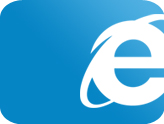Where is Internet Explorer 9? Have you seen it?
 You'll have to look real hard to find IE9 in NetApplications April browser user share data. IE9 doesn't even make NetApp's browser-version breakdown chart for all operating systems, although its usage share was 2.41 percent. By comparison, Firefox 4.0, which launched 7 days later, snatched 5.43 percent usage share. Both browsers debuted in March.
You'll have to look real hard to find IE9 in NetApplications April browser user share data. IE9 doesn't even make NetApp's browser-version breakdown chart for all operating systems, although its usage share was 2.41 percent. By comparison, Firefox 4.0, which launched 7 days later, snatched 5.43 percent usage share. Both browsers debuted in March.
The kicker: Windows 7. Microsoft only released IE9 for that operating system and Windows Vista. By comparison, Firefox 4 runs on XP, which is still the majority of the Windows install base. Whoops, Firefox 4 has higher usage share there, too -- 8.40 percent to IE9's 7.46 percent. But don't cry for Microsoft. IE8 has 47.54 percent usage share.
Still, NetApps data isn't good for IE9. Chrome 10 also launched in March, and its Windows 7 usage share is 14.75 percent, making it second to IE8. From the all-OS viewpoint, Chrome 10 has 9.91 percent usage share, or about four times IE9's.
NetApps sees something in the numbers that I don't: "After one month, Internet Explorer 9 is benefiting from Windows 7 momentum and has doubled its usage share on Windows 7 from 3.6 percent last month to 7.5 percent in April. Also, Internet Explorer 9's daily usage share for the last day of the month (April 30th) hit 9.95 percent worldwide on Windows 7."
If Windows 7 is benefitting IE9 so much, why is usage share so much higher for Chrome 10 and Firefox 4? IE9 ended March with the aforementioned 3.36 percent usage share on Windows 7, compared to 10.19 percent for Chrome and 2.8 percent for Firefox 4. As previously stated, Mozilla's newest browser passed Microsoft's in usage share for April.
Overall in March, for all OSes, Chrome 10 had 6.69 usage share compared to 1.68 percent for Firefox 4 and 1.04 percent for IE9. From that perspective, Google and Mozilla browsers' usage share grew considerably faster than IE9's from March to April. Another measure: I checked NetApps data on March 26. IE 9 usage share was 1.78 percent (in 12 days). By comparison, Firefox 4 had 3.64 percent usage share (in just 5 days) -- or twice as much in less than half the time.
Chrome 10 launched on March 8, IE9 debuted a week later and Firefox 4 was official on March 22. Microsoft reported 2.35 million IE9 downloads during the first 24 hours, while FF4 topped 6 million downloads during same time period. On April 23, Firefox 4 downloads surpassed 100 million; it's 130 million today, according to the Firefox 4 stat counter, and still climbing fast.
No sooner than these browsers shipped then Google released Chrome 11 beta and Microsoft and Mozilla, IE10 and Firefox Aurora previews, respectively -- prompting me to ask on April 14: "Is web browser development moving too fast?" Google released Chrome 11 stable build last week. A few days in April maybe, but it was enough for the new browser to pop .26 percent usage share.
But there's another question: Is IE9 adoption moving fast enough? I don't know what NetApps is smoking unless there's some secret sauce in the usage share recipe not available to non-subscribers. Chrome 10 has greater usage share overall and on Windows 7 than either Firefox 4 or IE9. Meanwhile, FF4 is the big usage share gainer overall -- going from 1.37 percent to 5.43 percent in one month. It's growth also was greater on Windows 7, where Microsoft has home field advantage, going from 2.8 percent to 8.4 percent usage share in just one month.
"Microsoft seems willing to sacrifice usage share in the short term in order to leapfrog the competition in the long run by applying all their resources to modern versions of Windows," according to NetApps. Mmmm. Perhaps IE9 will be the comeback kid in a few months. For today, the browser is nearly invisible behind Chrome 10's and Firefox 4's dust.